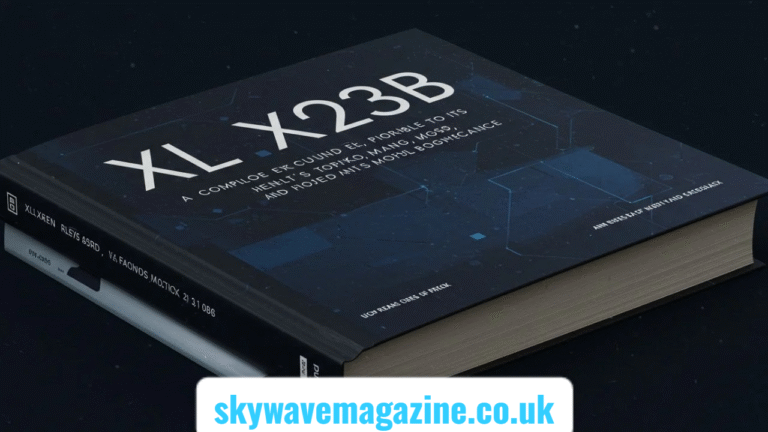
“mystuff is your personalized digital organization hub that empowers you to manage files, tasks, and ideas in one place. With mystuff, you gain clarity and control over your digital life.”
“Think of mystuff as the central command for all your digital assets—from documents and notes to task lists and media. By defining what mystuff means to you—whether it’s a folder structure, a note-taking system, or a spreadsheet tracker—you transform mystuff into a powerful tool for digital organization. Use a method like PARA (Projects, Areas, Resources, Archives), or customize Google Sheets or a note-taking app to bring structure to your mystuff setup, making everything accessible, manageable, and efficient.”
User Query: What Is “MyStuff” and Why Is It Useful?
In today’s increasingly digital world, we are surrounded by a massive amount of personal content—documents, photos, apps, videos, downloads, and more. Yet, the challenge remains the same: how do we keep everything neat, accessible, and secure without getting overwhelmed? Enter MyStuff—a concept and toolset designed to help individuals regain control over their digital belongings.
Whether you’re a student juggling assignments, a professional managing projects, or simply a digital enthusiast, MyStuff provides an intuitive, centralized way to handle everything you store across your devices and accounts. But MyStuff isn’t just a fancy name for a folder—it’s a framework and sometimes an app suite that aims to simplify, safeguard, and streamline your digital life.
This article explores how MyStuff works, its real-world applications, and why you should consider embracing this tool or method to better manage your personal and professional content. Get ready to rethink how you organize your digital footprint.
Understanding the Concept of “MyStuff”
Not Just a Folder—It’s a System
The term “MyStuff” might sound simple, even generic, but its implications are far-reaching. At its core, MyStuff refers to the way users manage their digital possessions, typically via tools or platforms that centralize data organization. Many platforms and devices, including Windows PCs, smartphones, and cloud apps, use variations of this idea to help users locate and secure their files easily.
It often includes default folders such as:
- My Documents
- My Photos
- My Downloads
- My Applications
The idea is to give users a single interface or system to access all their stored data. But MyStuff has evolved. Modern implementations include:
- Cloud-based dashboards
- AI-powered sorting and tagging
- Cross-device sync capabilities
- Built-in backup and restore features
Essentially, MyStuff provides an efficient way to manage what you own, both offline and online.
The Evolution of MyStuff: From Desktop to Cloud
How MyStuff Has Changed Over Time
In the early days of personal computing, “MyStuff” was more literal. Systems like Windows XP had folders labeled “My Documents” and “My Pictures” to help people find their files. But those folders stayed locked to a single machine. If that hard drive crashed, your “stuff” was gone.
Today, MyStuff has become smarter, more flexible, and cloud-powered. Services like Google Drive, Dropbox, OneDrive, and Apple’s iCloud offer cloud-based file systems that embody the MyStuff principle—centralized access, anywhere, anytime. Even newer apps like Notion, Obsidian, and Evernote allow users to tag and store a variety of content types in custom ways.
This evolution marks a shift from physical storage to intentional data management—a transition that’s critical for productivity, security, and digital wellness.
Is Your Stuff Secure? Privacy in the MyStuff Age
Managing Personal Data Responsibly
One of the most overlooked aspects of MyStuff is privacy. When all your files, notes, and photos are stored in one place, the stakes are high. Hackers, system crashes, and even accidental deletion could result in major data loss.
Modern MyStuff implementations address this through:
- Two-factor authentication
- Encrypted backups
- User-controlled permissions
- Automated syncing and restore points
Whether you use MyStuff through a custom cloud dashboard or a third-party storage tool, make sure it follows best practices in cybersecurity. Ask: Does it offer version history? Can you access it offline? Is data encrypted end-to-end?
Failing to secure your digital footprint could result in more than just inconvenience—it could put your identity and assets at risk.
Organizing with Intention: Structure vs. Chaos
The Psychological Benefits of Digital Order
A cluttered digital life can have real psychological consequences. Studies show that disorganization—whether physical or digital—leads to:
- Increased stress levels
- Reduced productivity
- Decision fatigue
- Memory overload
Organizing your MyStuff reduces these cognitive burdens. When files are sorted and searchable, your brain doesn’t have to work overtime. Instead of hunting down old documents or duplicate downloads, you can focus on tasks that matter.
Creating folders based on themes, dates, or projects gives structure to your digital world. Use tools with smart AI tagging, reminders, and autosave features to maintain that order effortlessly.
MyStuff Across Devices: Seamless Syncing
One System, Multiple Platforms
In the multi-device lifestyle we all live today—phones, tablets, laptops, smart TVs—MyStuff becomes more essential than ever. The ability to access your “stuff” across devices without needing USB drives or email attachments is a game-changer.
Here’s how MyStuff ensures cross-platform harmony:
- Auto-sync via cloud services
- Universal search features
- Device-specific optimization (e.g., reduced file sizes for mobile)
- Unified interfaces across operating systems
Tools like Google Drive and Apple iCloud are excellent examples. Save a photo on your iPhone, edit it on your Mac, and present it via your Smart TV—without emailing it once.
Tools That Embody the “MyStuff” Philosophy
Real Apps Making Digital Life Easier
Here are five tools that reflect the MyStuff mindset:
- Google Drive: Cloud storage with powerful search and collaboration tools.
- Dropbox: Focused on file synchronization and remote access.
- Notion: Combines notes, tasks, and files in a custom workspace.
- Evernote: A digital notebook that syncs across all devices.
- Windows File Explorer: A local approach that can still organize your personal data effectively.
Each tool serves different needs, but all follow the principle: organize, store, and access your digital possessions efficiently.
Comparison of MyStuff Tools
| Tool | Storage Type | Collaboration | Offline Access | Tagging/Organization | Cost (Basic Tier) |
| Google Drive | Cloud | Yes | Yes | Moderate | Free (15 GB) |
| Dropbox | Cloud | Yes | Yes | Moderate | Free (2 GB) |
| Notion | Hybrid | Yes | Yes | High | Free |
| Evernote | Hybrid | Limited | Yes | High | Free (limited) |
| File Explorer | Local | No | Yes | High | Free |
How to Set Up Your Own “MyStuff” System
Step-by-Step Framework for Beginners
- Audit your files – Go through your current digital storage to identify what you actually use.
- Create root folders – Start with broad categories like “Work,” “Personal,” “Photos,” and “Finance.”
- Use subfolders – Add granularity, such as “Receipts” under Finance or “Client Projects” under Work.
- Leverage search and tags – Use AI-powered tools or naming conventions that help future searches.
- Set a review schedule – Revisit and clean your MyStuff folders monthly to prevent digital hoarding.
Taking the time to build and maintain a system for your digital life gives you peace of mind and saves hours of future frustration.
Real-World Example: Freelancers and MyStuff
How Digital Creatives Manage Projects
Freelancers, especially those in writing, design, and media, often juggle dozens of files for multiple clients. MyStuff can be a lifesaver in these scenarios. Imagine organizing every contract, brief, draft, and invoice under a system that’s both scalable and secure.
By labeling folders by client and year, and using version-controlled cloud tools, freelancers eliminate chaos. This structure:
- Boosts credibility
- Prevents lost invoices
- Simplifies tax filing
- Encourages quicker project turnover
Professionals who master their MyStuff system often report improved productivity and a better work-life balance.
Creative Uses of MyStuff: Beyond Work
More Than Just Productivity
Not all uses of MyStuff are professional. People use it to archive:
- Travel photos
- Recipes
- Digital art
- Kids’ schoolwork
- Old journals or scanned documents
It’s not about having things just for storage—it’s about accessing memories and data when it matters most. A smart MyStuff setup ensures that a favorite vacation photo or an old diary entry isn’t lost in a sea of random files.
Balancing Automation with Manual Control
Too Much AI Can Be Dangerous
While smart algorithms can help tag and sort files, overreliance on automation can lead to misplaced content. AI might mislabel important documents or merge unrelated photos into one group.
The best MyStuff systems mix:
- AI-driven organization
- Manual folder creation
- Consistent naming conventions
- User validation of automated actions
This balance gives users the power to trust the system—without losing control over what matters.
Key Features to Look for in MyStuff Apps
| Feature | Why It Matters |
| Cross-device syncing | Access your data anytime, anywhere |
| Folder/subfolder support | Maintain order and category clarity |
| Data encryption | Keep sensitive files safe |
| Offline access | Stay productive without internet |
| Custom tags and filters | Improve searchability and workflow |
Conclusion: MyStuff Is Your Digital Peace of Mind
We live in a time where managing our digital belongings is as crucial as managing our physical ones. MyStuff isn’t just an app or a folder—it’s a mindset. It’s about knowing where your files are, being able to access them quickly, and doing so securely. From professionals to hobbyists, students to retirees, everyone stands to benefit from organizing their MyStuff the right way.
By choosing the right tools, maintaining good habits, and staying proactive with organization, you empower yourself to make better use of your digital life—and ultimately reduce stress, increase productivity, and free up mental space for what really matters.
Frequently Asked Questions
What is mystuff and how can it help me?
Answer:
“mystuff refers to your personalized system for organizing digital files, ideas, and tasks. By clearly defining mystuff—whether as folders, notes, or spreadsheets—you can streamline your workflow, reduce clutter, and improve productivity.”
How do I set up mystuff for better digital organization?
Answer:
“To set up mystuff effectively, start by deciding what format suits you (cloud folders, note-taking app, spreadsheet). Then apply a structure like PARA or categories such as Projects, Areas, Resources, and Archives. As you populate your mystuff, ensure consistency and easy naming conventions.”
What tools can support building my mystuff system?
Answer:
“You can support your mystuff system using tools like Google Drive, Notion, Evernote, or Google Sheets. Choose those that let you tag, filter, and search easily to maintain order in your mystuff.”
How often should I maintain and review mystuff?
Answer:
“Make reviewing mystuff a weekly or monthly habit. Tidying up entries, archiving finished items, and reorganizing priorities keeps mystuff relevant and prevents digital clutter.”
Can I customize mystuff for different parts of my life?
Answer:
“Absolutely! Your mystuff system can adapt to personal and professional needs. You might have separate sections for work projects, personal tasks, study notes, or creative ideas—all integrated into one organized mystuff framework.”




